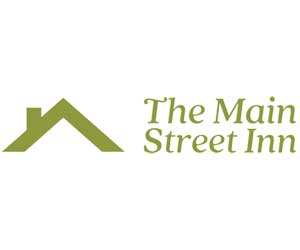The Web design techniques in the current digital era are indispensable for a strong online presence of any company or project.
However, simply having a website does not guarantee that you will reach your desired audience. This is where SEO (Search Engine Optimization) plays a crucial role. SEO refers to the practices and techniques used to improve the visibility and ranking of a website in search engines.
Web design plays an important role in SEO, and here are some web design techniques that you can implement to improve the SEO of your site.
Optimized URL Structure
An optimized URL structure is fundamental for improving the SEO of a website. By using a clear and descriptive URL structure, navigation for users is facilitated, and relevant information is provided for search engines.
Including keywords related to the page’s content in the URL can enhance the page’s relevance for search engines. URLs that are excessively long or complex can be confusing for both users and search engines. Maintaining concise and easy-to-understand URLs is crucial.
Therefore, for improved readability, it is advisable to use underscores (_) or hyphens (-) to separate words in the URL instead of spaces or special characters. Implementing an optimized URL structure can enhance search engines’ understanding of the content.
Image Optimization
Image optimization is a crucial practice to improve a website’s performance in terms of loading speed and user experience. Some image optimization techniques include file compression to reduce their size without significantly compromising visual quality, using appropriate image formats such as JPEG and PNG, and specifying specific dimensions in the HTML code to avoid unnecessary resizing.
Furthermore, including alternative text (the “alt” attribute) in images is beneficial not only for web accessibility but also provides relevant information for search engines. By properly optimizing images, the overall loading speed of the site can be improved, consequently enhancing its positioning in search results.
Responsive Design
Responsive design, or adaptive design, is a web design technique that ensures a website is optimally displayed across a variety of devices and screen sizes, including mobile devices.
This is achieved through the use of flexible grids, images, and flexible media, along with CSS media queries. By implementing responsive design, a consistent and high-quality user experience is ensured, regardless of the device being used to access the site.
This is crucial given the growing use of mobile devices for web navigation. Responsive design not only improves usability and user retention. But can also positively contribute to SEO by providing a satisfying user experience.
Fast Loading Speed
Search engines, such as Google, value the fast loading speed of a website. Visitors also appreciate a fast loading experience. Which can increase user retention and satisfaction.
To improve your website’s loading speed, you can optimize the file sizes, minimize the HTML, CSS, and JavaScript code. And utilize a caching service to make subsequent visits faster.
Intuitive Navigation Structure
A well-structured web design and clear, coherent navigation help users and search engines easily find relevant content on your website. Utilize an intuitive navigation menu with well-organized internal links and breadcrumbs to indicate each page’s location.
Additionally, ensure relevant internal links are established between different pages to facilitate navigation and improve search engine indexing.
Optimized Quality Content
Optimized quality content is crucial for improving a website’s performance in search engines. Some practices to achieve this include creating original, relevant. And valuable content for users, including keywords naturally and organically, structuring content with appropriate headers and tags, and optimizing keyword density.
Additionally, it’s important to frequently update content, ensure it’s easy to read and understand. And encourage user engagement such as comments and social media shares.
By providing optimized quality content, the site’s relevance and visibility in search results can be improved. Subsequently increasing organic traffic and user retention.
Conclusion
Web design and SEO are closely related. Implementing web design techniques that follow SEO best practices can improve the visibility and ranking of your website in search engines. This, in turn, can help you reach a broader audience and increase organic traffic to your site.
It’s not just about the visual appearance of your website. But also about the user experience and how search engines interpret and rank your site based on design and content.





